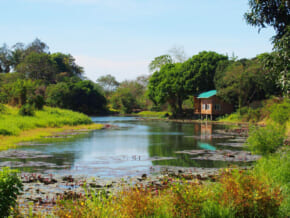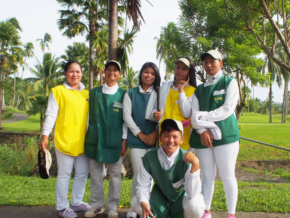JAPAN TRAVEL: Inami Town in Toyama Prefecture
Wood carving exists in a lot of prefectures in Japan, but there’s only one town that has earned the title of Japan’s best wood carving town: Inami. It’s a good town to visit after spending a night in Ainokura. It gives continuation to your tour of traditional Japan while keeping it all in one prefecture.
Also read: JAPAN TRAVEL: Discover Toyama Prefecture in the Hokuriku Region

Located at the southern end of the Tonami Plain, Inami is known all over Japan for its sankyoson – scattered settlements that, when plotted on a map, look like pieces on a Go board (Go is a Japanese board game).
Born in 1390, Inami basically grew from Zuisenji Temple, a Buddhist temple put up by Saint Shakunyo (the first chief priest) under orders from Emperor Gokomatsu. They even celebrate a festival to honor his influence every 22nd of July: the Prince Shotoku Festival.

Yokamachi Street
Almost every person in Inami is engaged in wood carving, which dates all the way back to when the town was founded. The town shows off their penchant for wood carving along Yokamachi Dori, lined with wood carving workshops that fill the air with the sounds of wooden mallets, especially on busy days.

Almost everything is chiseled out of wood along this street, the end of which leads to the entrance of the temple. You can even catch a glimpse of sculptors carving wood into images of Ramma and other Buddhist images.

You can talk to people from the Nanto Tourism Association if you want to experience wood carving for yourself or visit one of Inami’s 120 shops, visit Wakakoma (the oldest and only existing sake brewery in Inami), or simply admire the handiwork of Inami’s previous residents by visiting the temple.
Zuisenji Temple
This temple can be said as the reason why Inami was put on the map. Zuisenji acts as the crown jewel to Inami-machi’s woodcarving expertise, with most of the temple adorned in some of the best wood sculptures you’ll see.

One sculpture, in particular, was made by a wood carving artisan from Kyoto, who was able to pass on his skills to the townspeople. Sanshiro Maekawa, the man responsible for the wooden dragons at the main gate, was at the helm of the reconstruction of Zuisenji when it was burned down in 1763. The San-mon as it’s called in Japan is one of the town’s “important cultural assets”, which include the dragons made by Maekawa.
Also read: JAPAN TRAVEL: Ainokura Gassho-style Village in Toyama Prefecture

As with any Buddhist temple, the Main Hall is where people will gravitate. Zuisenji’s main hall is the 4th largest wooden building in Japan, with enough floor space to fit 450 straw mats.
Photography is forbidden inside the main hall, but that should not stop you from admiring the majesty of this wooden structure a few steps from the main gate. You can also come in close and marvel at the craftsmanship of the main hall; just don’t step inside when you whip out your camera.
A visit to the temple will set you back ¥300 for adults, ¥200 for middle school students, and ¥100 for primary school students, with discounts available for groups of 25 or more people. It’s open every day from 9 a.m. to 4:30 p.m.
Getting to Inami-machi
To get to Inami, use your Hokuriku Arch pass and take either the Thunderbird Limited Express train from Osaka to Shin Takaoka Station, then transfer to the JR Johana Line and get off at Johana Station. If you’re coming from Tokyo, just use the Hokuriku Shinkansen and get off at Shin Takaoka. From Johana station, you can take a taxi or ride a bus to Inami.
Written by Andronico Del Rosario
Supported by GCP
This first appeared in Philippine Primer Magazine Vol. 33 – December issue.













